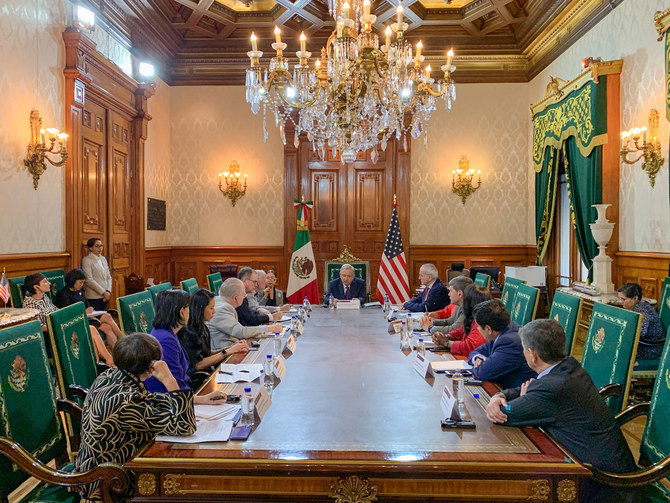Birth pains of a new trade deal for North and South America

When US Secretary of State Mike Pompeo visits Mexico on Sunday, top of his hosts’ agenda will be Washington’s ratification plans for the new US-Mexico-Canada Agreement (USMCA), anchoring North America’s relationship with the South amid legislative logjams in the US Congress, and the Trump team’s continuing concerns over immigration on the US border.
The importance of the USMCA for the region is underlined by the fact that the North America Free Trade Agreement (NAFTA), which the new accord will supersede, underpins over $1 trillion in annual trade. The new deal will therefore be a cornerstone for political and economic relations into the 2020s.
The USMCA, in effect a NAFTA 2, emerged from a tortuous negotiation between the three countries in 2017 and 2018 with the outcome celebrated by Donald Trump as “wonderful” and a “historic transaction!” He asserts that it delivers on one of his key 2016 election promises — to curb the US trade deficit and get “tough” with US trade partners — and has given him renewed confidence that he can decisively re-shape the international political economy after his decisions to withdraw from the Trans-Pacific Partnership, launch trade sanctions against world powers from the EU to China, and threaten to withdraw from the World Trade Organization.
Yet while Trump has claimed USMCA as a huge political and economic win for his America First approach, the agreement has many more similarities than differences with NAFTA, which he described as “the worst trade deal maybe ever signed anywhere.” The concessions secured by the Trump team from Mexico and Canada were not as significant as he had previously claimed possible.
To be sure, the deal contains many new benefits for the US, including a limited opening of Canada’s dairy markets. But Washington has also agreed to the requests of Mexico City and Ottawa to preserve a trade dispute settlement mechanism while protecting Canada’s auto industry from further US tariffs.
The importance of the USMCA for the region is underlined by the fact that the North America Free Trade Agreement (NAFTA), which the new accord will supersede, underpins over $1 trillion in annual trade.
Andrew Hammond
It is partly because the Trump team oversold what the USMCA negotiations would achieve that passage in Congress is proving tricky with Democrats, who have historically been more protectionist than Republicans. The legislation may not come up for final votes for weeks, threatening to push this issue into 2020, which may make ratification even tougher given the usual hardening of positions in a big election year.
The slow pace of progress also reflects the fact that international trade is under increasing political attack, as exemplified in increased criticism of NAFTA from both the US political left and right; which is why the Trump team gave the new pact a brand makeover, despite the similarities with NAFTA.
The protracted discussions on Capitol Hill are worrying the Mexicans, especially after the sometimes rancorous negotiations the Trump team put them and the Canadians through. A fear is that Washington may even seek to re-open the trade talks, and it is perhaps no coincidence that the Canadian legislature has also not yet ratified the deal (although Mexico has). Any such slippage would be opposed by both Mexico City and Ottawa, which the Trump team tried to divide during the negotiations.
There are precedents for Mexican and Canadian fears about the negotiations being re-opened. The George W. Bush administration, for instance, faced Democratic congressional demands for amendments to trade deals with South Korea, Panama, Peru and Colombia. As South Korea and Panama had not yet legislated for the deal, they incorporated the extra provisions, while Peru and Colombia were forced to make changes post-ratification.
Pompeo will seek to reassure Mexico of the Trump team’s commitment to ratification. With relations frayed, both sides know the urgency of the new trade deal as a strategic framework for political and economic ties a quarter of a century after NAFTA’s birth.
- Andrew Hammond is an Associate at LSE IDEAS at the London School of Economics










































